Human Resources (HR) is pivotal in maintaining employee satisfaction and organizational efficiency. HR professionals are the backbone of a productive workforce, from managing daily inquiries to navigating complex administrative tasks. Yet, many teams find their resources stretched thin, mainly when relying on outdated tools or manual processes.
This is where Atlassian’s ecosystem comes into play. Initially designed for IT and technical teams, Jira, Confluence, and Jira Service Management have become essential tools for transforming HR into a streamlined and impactful operation. This guide will show how Jira, Confluence, and JSM can help reimagine HR service delivery to meet modern workforce demands.
How can Atlassian tools be used to manage HR successfully?
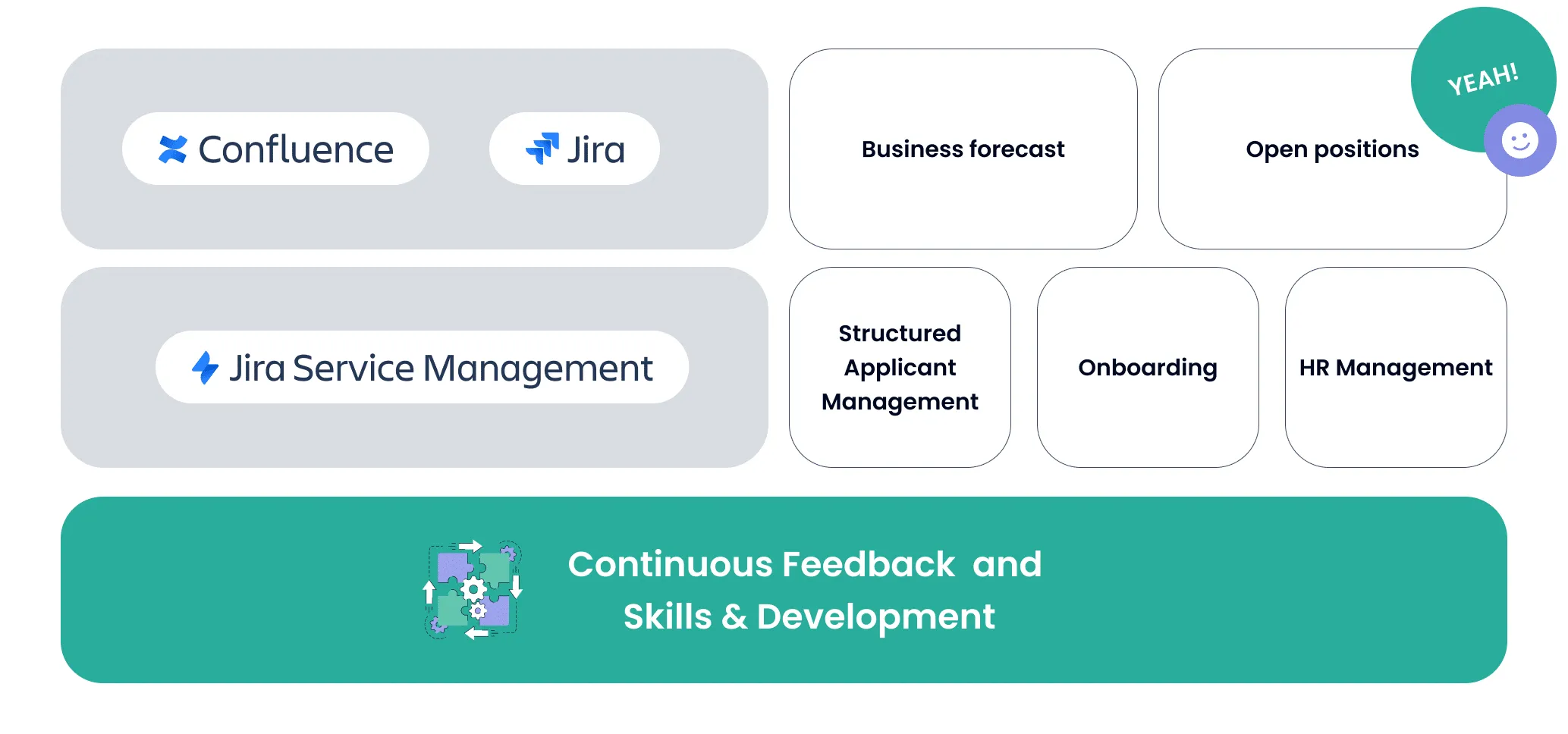
Business Forecast: Data-Driven Workforce Planning
Business forecasting is vital in aligning workforce planning with organizational goals by anticipating headcount requirements, timelines, and cost estimations. With the help of Atlassian tools like Confluence, Jira, and Atlassian Talent, organizations can streamline this process and ensure accuracy in their forecasting efforts.
Confluence provides a centralized platform for documenting business growth projections, team expansion plans, and budget allocations. Teams can maintain hiring roadmaps while collaborating with stakeholders to ensure all forecast aspects align with broader business objectives. Meanwhile, Jira transforms forecasts into actionable tasks or epics, enabling tracking of workforce planning initiatives, such as expanding teams or opening new positions.
Atlassian Talent complements these tools by providing specialized features that help organizations attract, manage, and retain the right talent, aligning workforce needs with business growth more effectively.
- Use Confluence to document and share key plans, such as headcount goals and budget allocations.
- Create Jira tasks linked to specific goals, like planned hires or team scaling initiatives.
- Integrate Jira, Confluence, and Atlassian Talent to maintain real-time connections between forecasts, talent acquisition, and task execution, promoting alignment.
This integrated approach ensures all teams have up-to-date information and can proactively address challenges, streamlining the workforce planning process.
Open Positions: Finding Business Needs
Hiring the right people at the right time is critical to organizational success. Confluence and Jira provide HR teams with an overview of the recruitment workflows while ensuring alignment with business forecasts. Moreover, HR teams are able to track progress across all open positions.
Confluence is a central hub where HR teams can collaborate on role descriptions, refine recruitment workflows, and document interview strategies. Dashboards offer real-time visibility into hiring progress, helping managers oversee open positions effectively. Jira takes these processes further by offering structured workflows to guide recruitment step-by-step, ensuring nothing falls through the cracks—from role approvals and job postings to interviews and offer rollouts.
- Use Confluence to centralize role descriptions and recruitment strategies, keeping everyone aligned.
- Discusses hiring at a strategic level, including approvals, alignment with forecasts, and tracking progress across all open positions.
- Generate reports in Jira to track metrics like time-to-hire and candidate conversion rates, enabling data-driven optimizations.
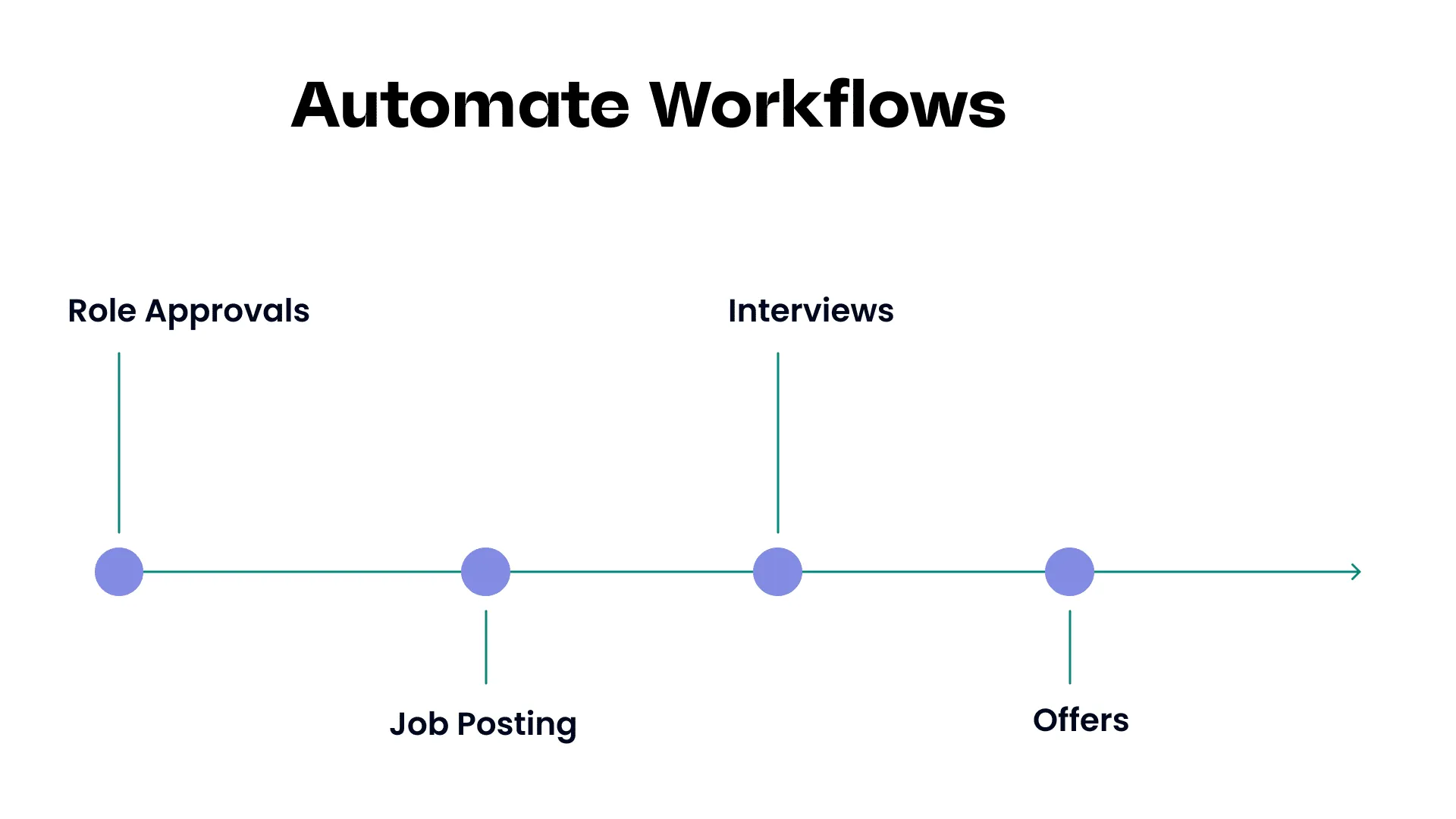
This structured approach reduces delays, increases transparency, and empowers HR teams to fill positions quickly while recruiting a high standard of job candidates.
Structured Application Management
Once HR teams realize which open positions need to be filled - the next step is filling these roles. HR managers must manage applicant submissions systematically, ensuring streamlined communication and task tracking. While HR teams can use Jira to create an issue for each job applicant in the recruitment process, HR teams can also use Jira Service Management (JSM) for Human Resources (HRSM) for more practical and effective application management.
JSM can be used to focus specifically on the granular tracking of applications at each stage of the job applicant journey. Using JSM, HR teams can set up an HR portal where applicants, recruiters, and employees can submit inquiries or applications. HR teams can track individual candidates’ progress through structured workflows (For example, resume screening -> interview scheduling -> offering.).
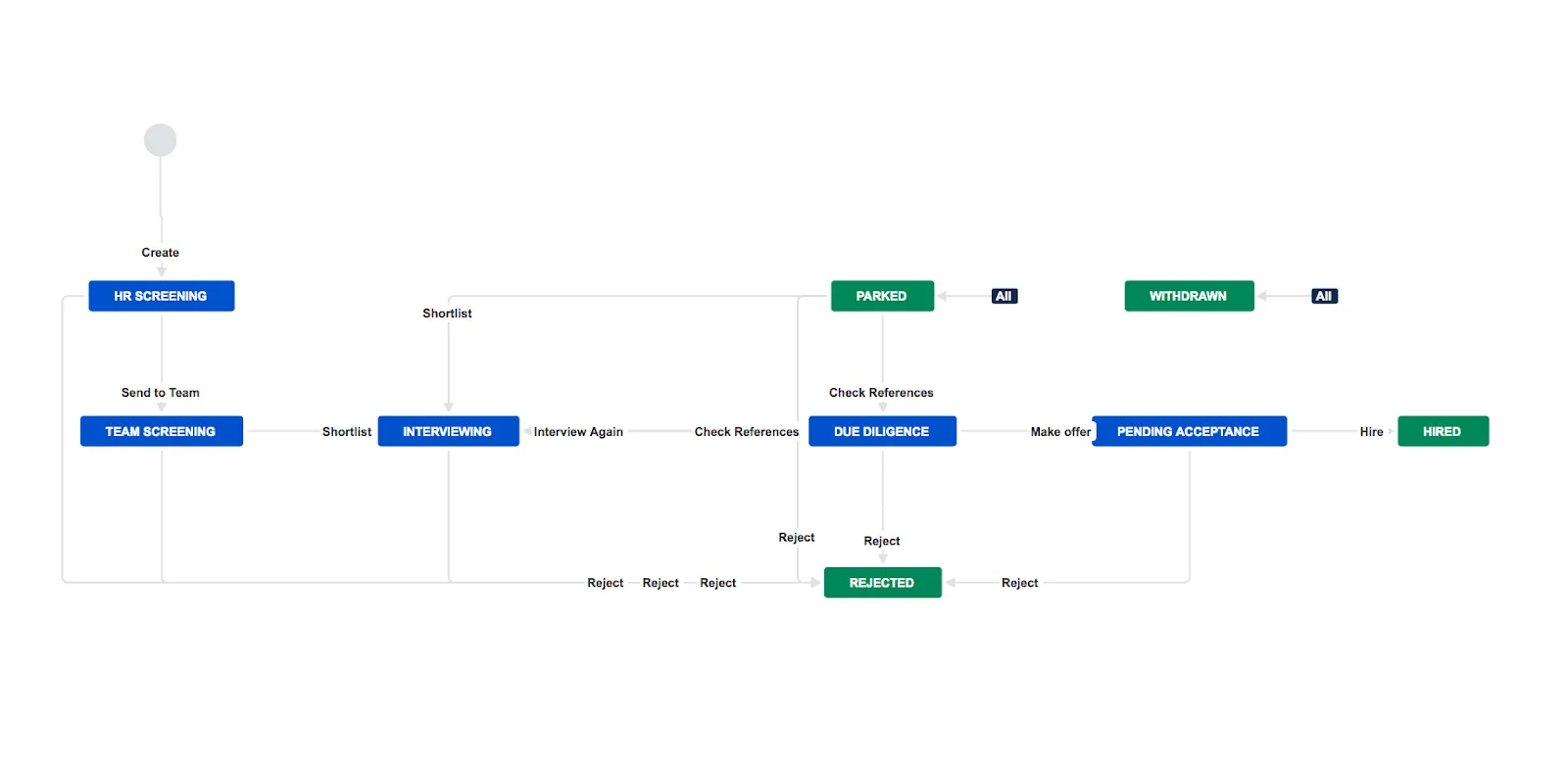
HR recruitment workflow use-case, source: Atlassian
JSM provides automation and customization to ensure repeatability and consistency when managing applications. Also, the tool allows for pre-configurated workflows to ensure accountability and standardization, such as automatically triggering the next steps or updates. For example, applications can be automatically routed to relevant team members in the case of an IT or software development role requiring coding or practical knowledge; applications can be escalated for technical interview setup. Another possibility is that JSM can provide automated responses and give applicants visibility into their application status.
We recommend that Jira and Confluence be used to tackle when and why hiring needs from a business-level perspective. While JSM be used to focus on how and when to progress candidates through the recruitment process (i.e. Structured Application Management). Together, these tools cover the multifaceted aspects of the HR recruitment management process.
Onboarding and Offboarding
First impressions always matter. HR teams are responsible for onboarding and ensuring the smooth integration of new hires. The other end of the spectrum is also true. HR teams are also responsible for offboarding. In both cases, HR teams can use JSM during these processes to ensure smooth transitions.
In the case of onboarding, HR teams can create an employee portal for onboarding requests (e.g. submitting documentation or equipment preferences). Also, IT and admin requests can be automated to gain access to software or hardware tools, seat allocation in the office, etc. Likewise, for offboarding, HR teams can ensure exit checklists are consolidated, from deactivating accounts to securely retrieving assets (laptops, keys, etc.).
HR Management
The cornerstone of HR management is ensuring that the needs and satisfaction of employees are taken care of (i.e. employee queries), ensuring policy updates and compliance tracking. HR can use Jira Service Management to ensure HR management is on top.
JSM is a tool that provides a space or platform for centralized support. First and foremost, such a portal can reduce sheer ticket volume by giving employees access to answers for common inquiries about policies, leave balances, and more. Love Confluence? Organizations can also use confluence in collaboration for general HR management. Confluence is perfect for integrating a knowledge base with HR policies, processes, and FAQs to enable employee self-service. Moreover, HR team members can maintain transparency by linking service desk queries to relevant documentation.
Jira Service Management, as a centralized platform, can also be used to address employee requests, resolve issues, and route tickets to the correct personnel. Moreover, it can be used to automate recurring HR workflows such as leave approvals, payroll questions, or benefits inquiries.
With these tools, HR teams can simplify processes, automate workflows and deliver consumer-grade service. The result is improved efficiency and employee experience. And just how important is this? Employee engagement has a direct impact on business outcomes. According to Gallup, low engagement costs the global economy $8.9 trillion annually, equating to 9% of global GDP. By improving the employee experience with Jira Service Management, HR teams can drive both individual, organizational, and even global success.
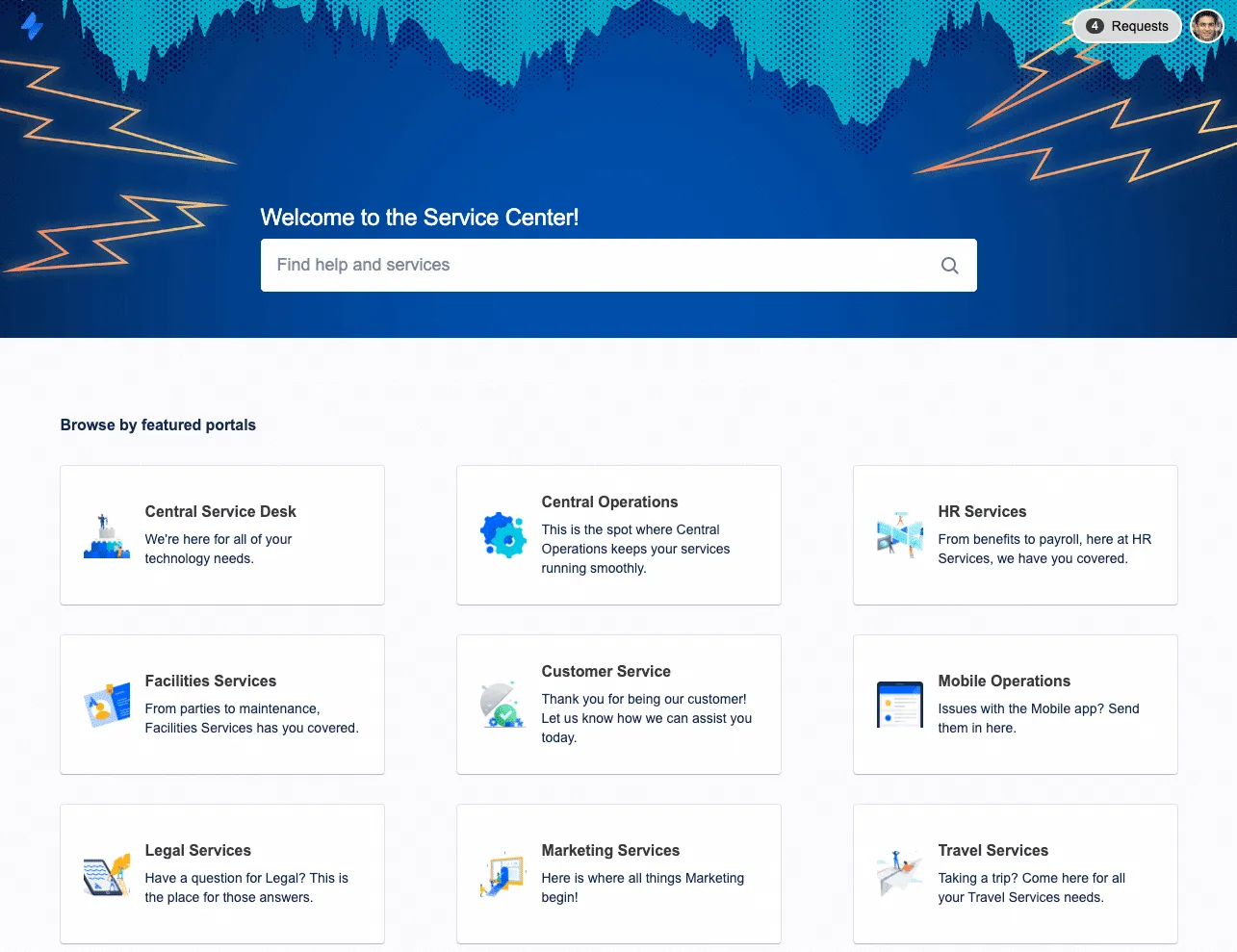
Example of a Service Center platform - Source: Atlassian
The best part? Using JSM as a tool is easier than ever. Atlassian provides ready-made templates to get started. Atlassian offers pre-built templates specifically for JSM, including workflows for onboarding, offboarding, and general HR inquiries.
Continuous Feedback and Development
HR teams can deeply customize all three tools in the Atlassian suite—Jira, Confluence, and Jira Service Management (JSM)—to meet their specific organizational needs.
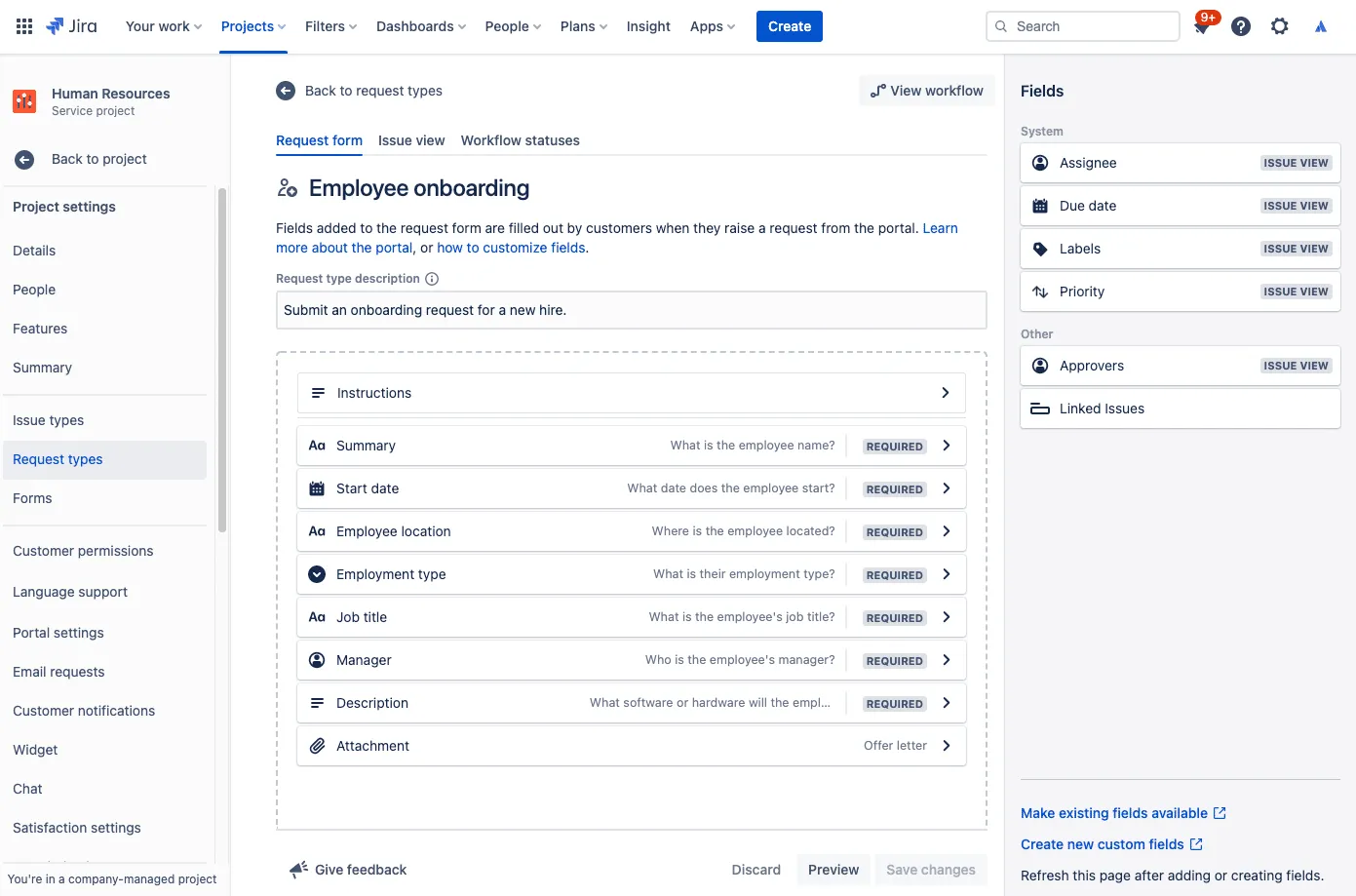
Template to capture employee information
Customization
With Jira, teams can tailor workflows to match their hiring, performance management, or employee engagement processes. Custom fields, issue types, and screens allow HR to collect the right data at each stage, ensuring smooth process management. Additionally, automation rules within Jira can be set up to trigger actions like notifying relevant team members or moving tasks through specific stages, ensuring efficiency and reducing manual effort.
In Confluence, HR teams can create and maintain custom templates for HR documentation, like employee information forms, training manuals, or onboarding checklists. These templates ensure consistency in data capture and knowledge sharing across HR functions. Confluence’s ability to customize access controls means HR documents—such as policies or performance reviews—can only be securely shared with the right team members.
Jira Service Management offers high-level customization with request categories like “Employee Onboarding” or “Employee Recognition” that simplify request intake. Queues and Service Level Agreements (SLAs) can also be customized to prioritize tasks and ensure timely resolution. HR teams can design advanced forms to capture detailed information upfront, minimizing follow-up questions and accelerating request processing.
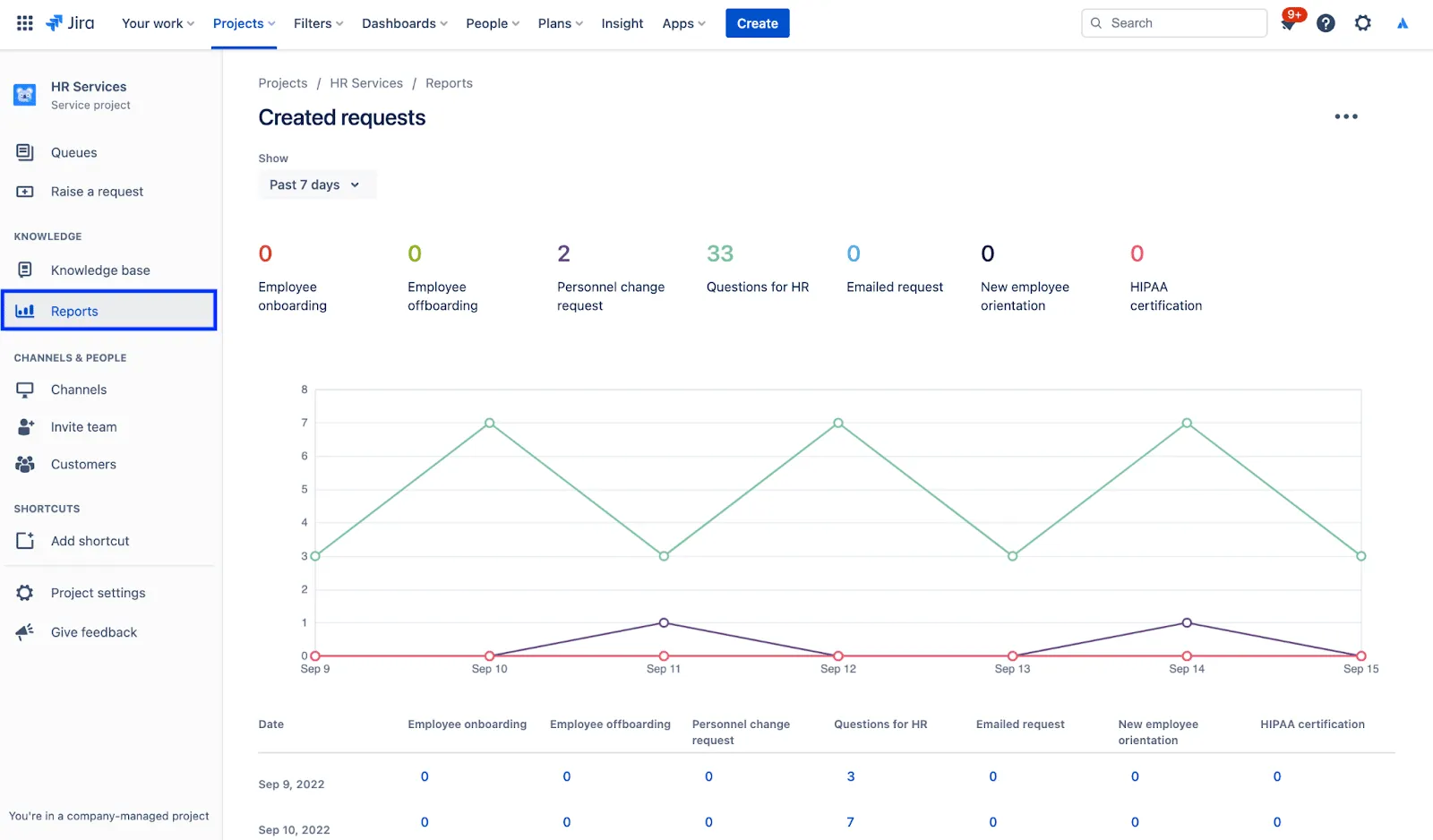
The dashboards and reporting features in JSM, Jira, and Confluence provide comprehensive data to help HR teams track performance. Dashboards allow HR to monitor service demand, response times, ticket volumes, and employee satisfaction all in one place. HR teams can use these dashboards to spot bottlenecks, analyze key metrics, and optimize processes for better service delivery. Moreover, Jira Service Management specifically offers reports and customer satisfaction surveys to collect feedback to ensure that HR teams can continuously improve.
Additional Key Features for HR Teams
Confidential HR Case Management
All these Atlassian tools also provide a robust set of privacy and confidentiality features tailored to HR teams’ needs. With role-based access controls and issue-level security in Jira, HR teams can limit access to sensitive information, ensuring only authorized personnel can view or edit critical tasks related to recruitment, employee data, or performance reviews.
Confluence further enhances confidentiality by enabling space and page-level permissions, restricting access to sensitive HR documentation, and offering version control to track changes. Additionally, JSM supports privacy settings at the request level, allowing HR teams to control the visibility of employee inquiries and internal processes.
These tools work together seamlessly to help HR teams maintain strict data privacy and ensure compliance with regulations like GDPR while automating workflows to protect confidential information across all HR functions.
Seamless Cross-Team Collaboration
As they say, teamwork makes the dream work - these Atlassian tools enable HR teams to collaborate effortlessly across departments. In Jira, tasks and workflows can be shared between teams—such as HR and IT—ensuring that everyone stays aligned on recruitment, onboarding, and other projects.
Confluence acts as a central hub for collaborative documentation, keeping team members up to date with the latest plans, policies, and meeting notes. Meanwhile, Jira Service Management streamlines communication by routing requests between teams, automating workflows, and ensuring quick resolutions. Together, these tools foster transparency, enhance efficiency, and promote cross-functional alignment within HR and across the organization.
Transform Your HR Service Management with Seibert
Modern HR teams need solutions that do more than manage requests—they need platforms that foster engagement, collaboration, and continuous improvement. Atlassian tools not only meets these needs but positions HR teams for scalable and sustainable growth.
Investing in Jira, Confluence, and JSM transforms traditional HR into an efficient, data-driven powerhouse. Ready to give your employees the service they deserve? Contact Seibert today to get expert help setting up your HR management system.

